
What can diabetics drink?
When you have diabetes, choosing the right drink isn’t always simple. And recent studies may only add to the confusion. Is coffee helpful or harmful to insulin resistance? Does zero-calorie diet soda cause weight gain? We reviewed the research and then asked three top registered dietitians, who are also certified diabetes educators, what they tell their clients about seven everyday diabetic drinks. Here’s what to know before you sip.
Find it’s hard to travel with diabetes? Check out our foolproof checklist.
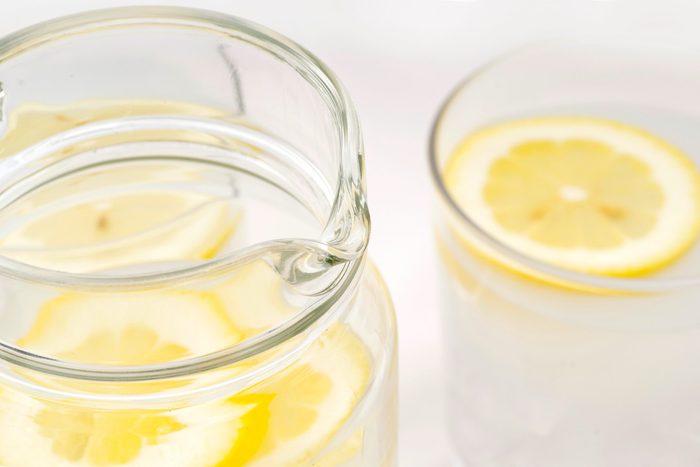
Drink more: Water
Could a few refreshing glasses of water assist with blood sugar control? A study in the journal Diabetes Care suggests so: The researchers found that people who drank 16 ounces (two cups’ worth) or less water a day were 30 percent more likely to have high blood sugar than those who drank more than that daily. The connection seems to be a hormone called vasopressin, which helps the body regulate hydration. Vasopressin levels increase when a person is dehydrated, which prompts the liver to produce more blood sugar.
How much: Experts recommend six to nine 8-ounce glasses of water per day for women and slightly more for men. You’ll get some of this precious fluid from fruit and vegetables and other fluids, but not all of it. “If you’re not in the water habit, have a glass before each meal,” recommends Constance Brown-Riggs, MSEd, RD, CDE, CDN, a spokesperson for the Academy of Nutrition and Dietetics and author of The African American Guide to Living Well with Diabetes. “After a few weeks, add a glass at meals too.” Here are 5 things you need to know about drinking tap water.
But what can diabetics drink besides water? Read on, because you do have options.
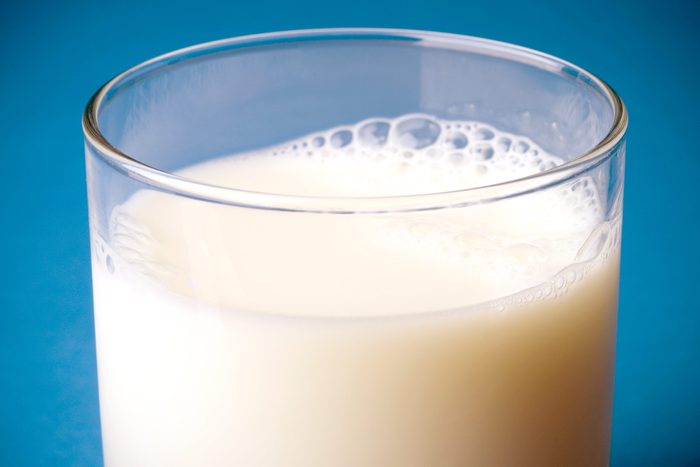
Drink more: Milk
Moo juice isn’t just a kids’ drink—it’s one of the best drinks for diabetics, too. It provides the calcium, magnesium, potassium, and vitamin D your body needs for many essential functions. Plus, research shows it may also boost weight loss. In one study of 322 people trying to slim down (some had type 2 diabetes, some had heart disease), those who drank the most milk—about 12 ounces a day—shed about five more pounds over the study period than those with the lowest dairy intake, about half a glass daily. “Low-fat or fat-free milk is a great beverage for people with diabetes,” Brown-Riggs says. Adding milk to your diet can also help lower your blood pressure (a concern for many people with diabetes) by three to five points, according to research from the Journal of the American College of Nutrition.
How much: Experts recommend two to three daily servings of dairy products, including low-fat or fat-free milk. Think you can’t possibly get that much? Drink a glass with breakfast or choose dairy for dessert, like yogurt, sugar-free pudding or mousse, or a fruit parfait. “Drink milk with a meal so your body can handle the natural rise in blood sugar that happens when we eat carbohydrates,” says Baltimore–based registered dietitian Angela Ginn, RD, LDN, CDE, a nutrition education coordinator at the University of Maryland’s Center for Diabetes and Endocrinology. Remember to factor in 12 grams of carbohydrates in every 8-ounce glass. Also, be sure you know the 5 signs of prediabetes that are easy to overlook.
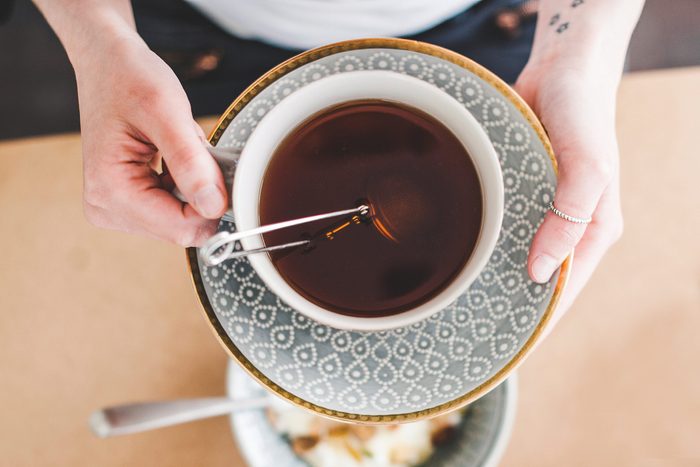
Drink more: Tea
No calories, big flavour, and a boatload of antioxidants have made tea—particularly green and black—trendy for health reasons, especially when it comes to drinks for diabetics. One Chinese study showed that black tea—not green or oolong tea—has the highest levels of polysaccharides, which slow the absorption of sugar into the bloodstream. Sipping four cups a day could lower the risk for developing diabetes by 16 percent, a German study found. Tea may also help reduce your risk of stroke and heart disease. The exception to these diabetic drinks: sweetened, bottled iced teas, which have tons of added sugar.
How much: Four to five cups of tea are OK for most people, just be sure the caffeine doesn’t keep you awake at night. More is fine if you opt for decaf. And watch what you add: Avoid sugar and full-fat milk and cream. For an added natural boost of energy, try our Ginseng Elixir recipe.
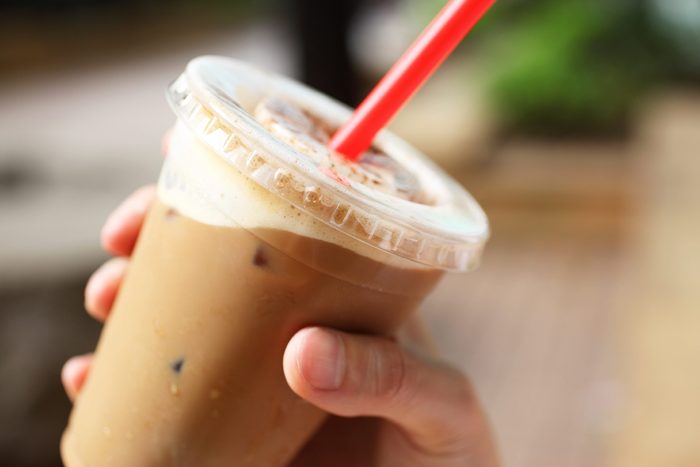
Drink carefully: Coffee
Some studies suggest that coffee drinkers are at lower risk for developing type 2 diabetes. (A compound in coffee called chlorogenic acid seems to slow absorption of glucose into the bloodstream.) But other research indicates that for people who already have diabetes, coffee may raise blood sugar or make the body work harder to process it. Bottom line: It comes down to how coffee affects your individual blood sugar. What many people with diabetes add to their coffee may be more of the issue. “Sugar, sweetened creamers, and high-fat milk and half-and-half can raise your blood sugar and your weight,” Brown-Riggs says.
How much: Experts say sipping two to three cups a day is probably fine, but if you’re having a tough time controlling your blood sugar, it may be worth cutting out coffee to see if it makes a difference. (And if you are cutting out coffee altogether, whip up our caffeine-free bevvy.) “Everyone’s blood sugar response to foods is unique and individual,” Ginn says.
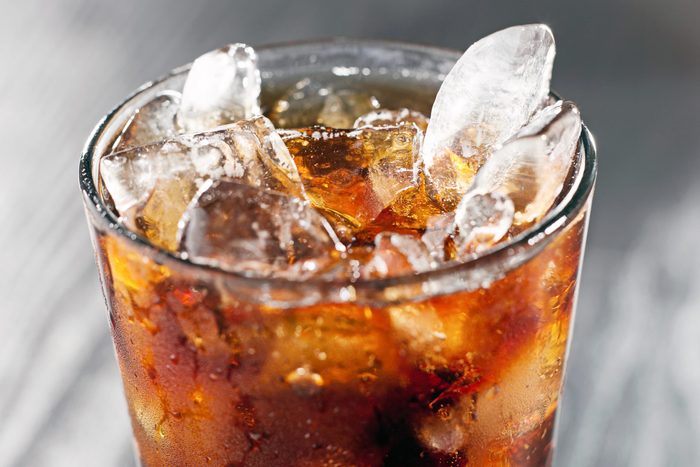
Drink carefully: Diet soda
Are fizzy, zero-calorie drinks a brilliant choice, or could they also lead to weight gain and mess with your ability to absorb blood sugar? Recent science has stirred the debate. In some studies, diet soda fans were at a greater risk of weight gain than people who drank the regular kind. In another, diet soda drinkers were 67 percent more likely to develop diabetes than people who didn’t drink them. One explanation could be that people who sipped sugar-free soda felt the diet drinks allowed them to have high-calorie treats later. Another theory posits that diet drinks keep taste buds “primed” for sweets, making it likely that people will indulge when they see cookies or ice cream. One Harvard study that followed 40,000 men for 20 years found no link between diet drinks and diabetes when factoring in body mass index, family history, and diet, which may indicate that diet soda drinkers tend to weigh more than people who skip them.
But don’t give up on diet sodas as your diabetic drinks just yet. Though there’s concern among researchers, the American Diabetes Association still suggests that diet soda is a better alternative to a sugar-packed version for people watching their blood sugar.
How much: If you already have a soda habit, it’s probably OK to sip a zero-calorie drink a day instead of a sugary version. But make sure to also drink healthy beverages like water and tea. Resist the temptation to see diet soda as a “magic eraser” for foods like chips, dips, sweets, fries, and burgers. People who enjoyed their diet pop as part of a healthy diet were about 30 percent less likely to have insulin resistance than those who ate fried and sugary foods in one University of North Carolina at Chapel Hill study. Learn 3 simple steps for improving your diet when you have diabetes.
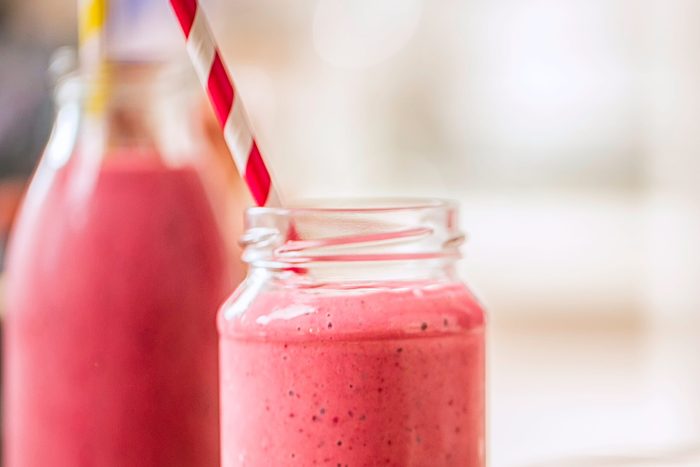
Drink less: Soda and sugary fruit drinks
With ten teaspoons of sugar in every 12-ounce can or bottle, sweet drinks can send your blood sugar soaring—and boost your risk for weight gain, high blood pressure, stroke, and heart disease. One sugary drink a day adds 150 empty calories and 40 to 50 grams of blood-sugar-raising carbohydrates to your diet, and can lead to a weight gain of 15 pounds per year, say researchers from the Harvard School of Public Health. Research shows that sugar (whether table sugar or high-fructose corn syrup) can cause people to pack on belly fat and increase inflammation and insulin resistance, boosting the risk for diabetes and heart disease. Bottom line: They’re some of the worst drinks for diabetics.
“If you have diabetes, cutting out soda and other sugar-sweetened drinks is one of the most powerful ways to control blood sugar, lose weight, and improve your health,” says Ginn. “Switching to healthier drinks can save hundreds of calories and a lot of carbohydrates. It’s often one of my first goals when I work with someone newly diagnosed with diabetes.” In a study from North Carolina, dieters who skipped soda were more likely to hit their weight-loss goals than those who didn’t.
How much: None, ideally. Or at least consider soda a treat, as you would a decadent dessert. If you have a soda habit, cut back by drinking a smaller size for a week or two, or mixing half regular soda with half diet soda or club soda to reduce your calorie and carb intake. Aim to go sugar-free: Water and club soda (including fruit-flavoured types) are ideal, and diet soda is an option for diabetic drinks. Check out these guilt-free healthy snacks to curb your cravings.
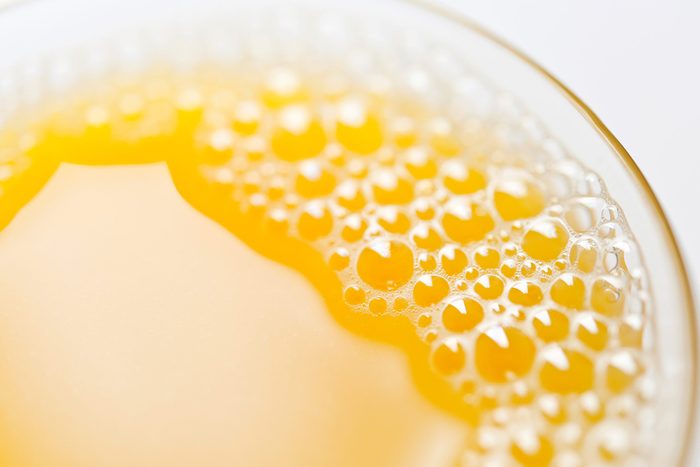
Drink less: Fruit juice
Your mom served up OJ every day with breakfast. The labels display tempting photos of colourful fruit. But are juices healthy diabetic drinks for blood sugar and weight control? A regular juice habit could be associated with an increased risk of type 2 diabetes, according to a study published in Diabetes Care. And real fruit is often a better deal. A 4-ounce serving of 100 percent orange juice has 56 calories, 12 grams carbohydrates, and no fibre; compare that to a small fresh orange, which has 45 calories, 11 grams carbohydrates, and 2 grams of blood-sugar-controlling fibre. That said, diabetics can have a little 100 percent fruit juice, says Dawn Sherr, RD, CDE, a practice manager with the American Association of Diabetes Educators. “They should just know the amount of juice they are consuming and factor the amount of carbohydrates into their eating plan,” she says.
How much: Juice lovers, eat fruit or switch to a low-sodium veggie juice, which is much lower in calories and carbohydrates than fruit juice. If you’re really craving juice, try a 4-ounce serving with a meal. Test your blood sugar afterward, and then repeat with the same meal for the next three or four days. If your blood sugar doesn’t rise more than 35 to 50 points, a little juice could be fine. Next, read up on these 50 easy habits that’ll help you live longer.
